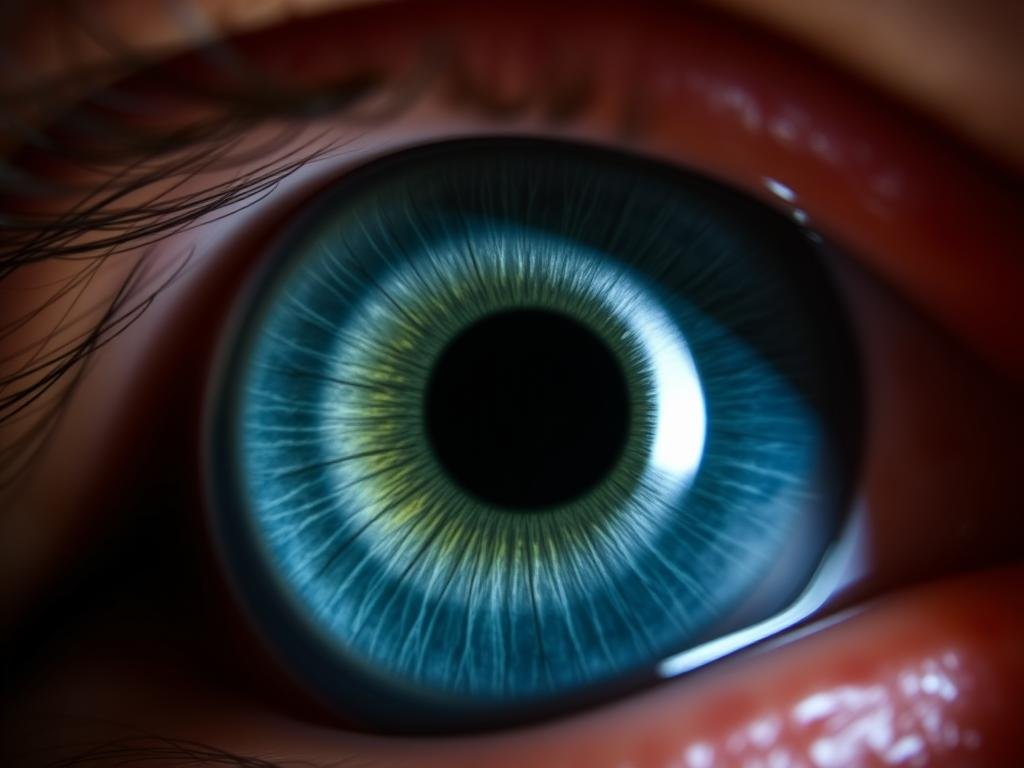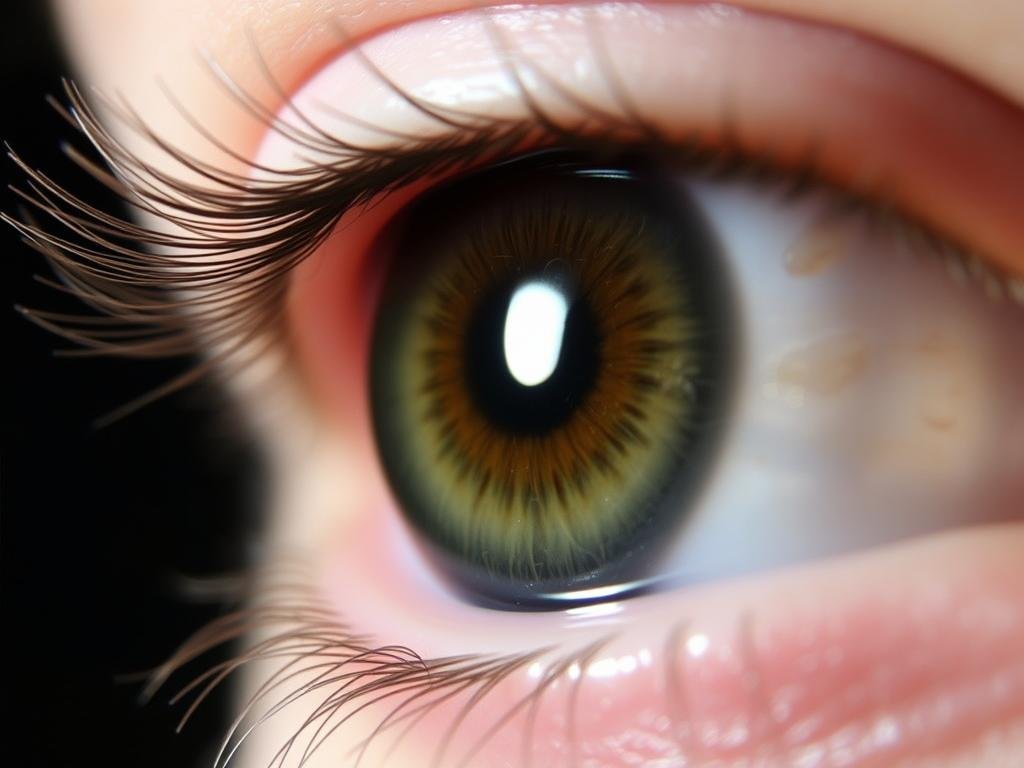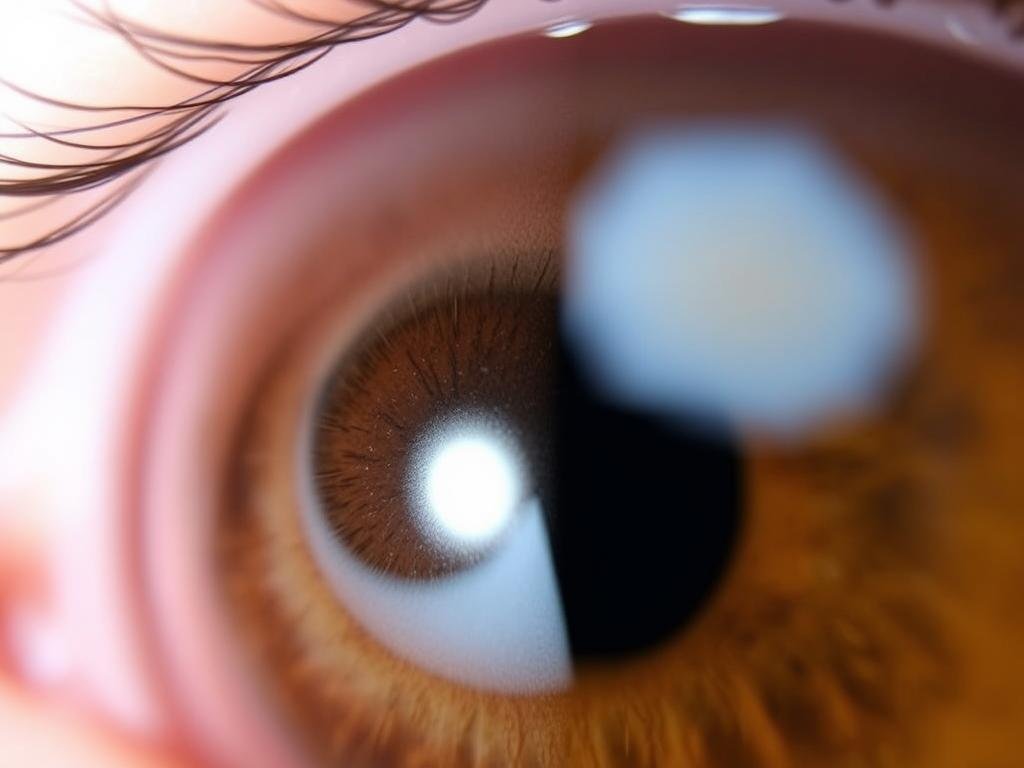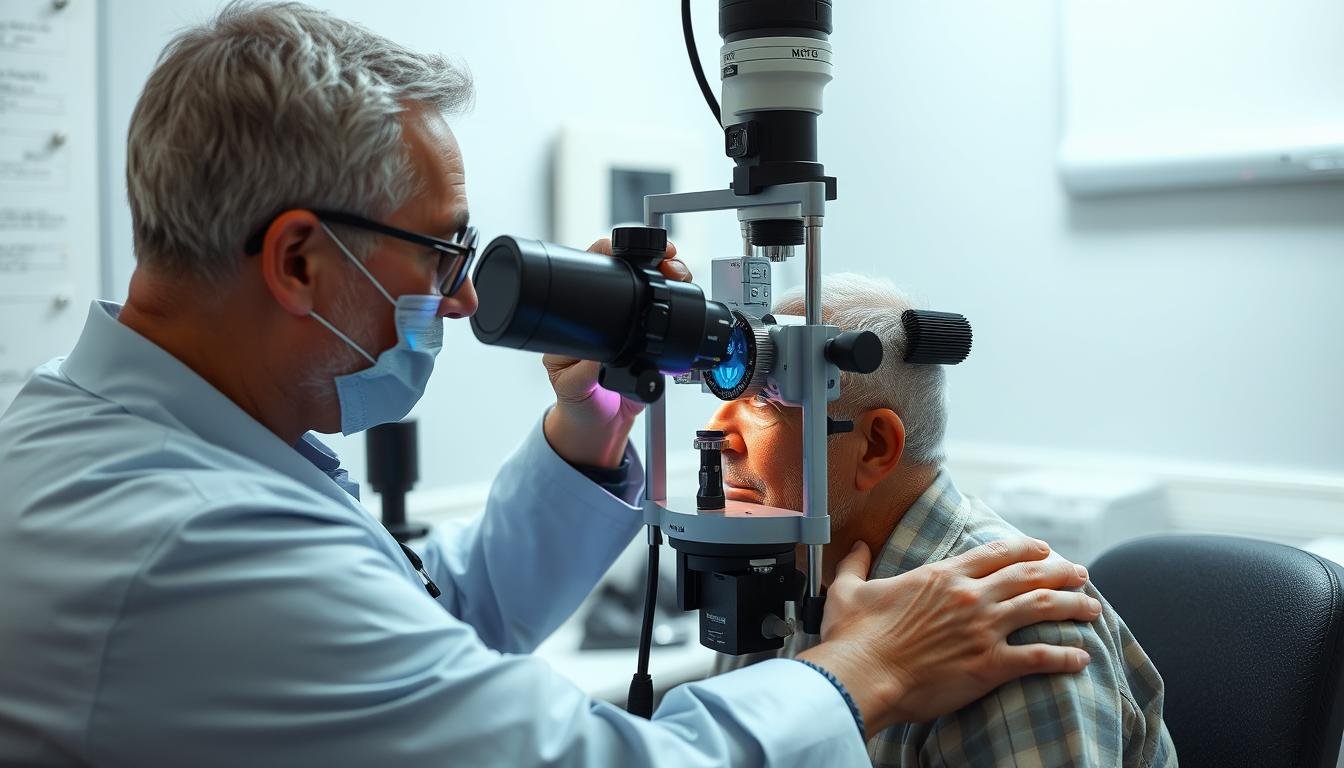Nerve rings in eyes represent distinctive circular patterns that form in the iris, creating concentric grooves or depressions around the pupil. These intriguing ocular features, sometimes called contraction furrows or stress rings, have garnered attention in both conventional ophthalmology and complementary health practices. While some consider them normal anatomical variations, others believe they may provide insights into systemic health conditions. This comprehensive guide explores the physiological basis, potential causes, associated symptoms, diagnostic approaches, and management options for nerve rings in eyes.
What Are Nerve Rings in Eyes?
Nerve rings manifest as circular or semi-circular grooves that traverse the iris, creating a pattern similar to ripples in water. These structural features develop in the stroma—the fibrous, middle layer of the iris that gives eyes their distinctive color. Unlike temporary changes in iris appearance, nerve rings typically represent more permanent structural adaptations once they form.
The appearance of nerve rings can vary significantly between individuals. Some people display subtle, barely perceptible lines, while others exhibit pronounced grooves that dramatically alter the iris texture. These rings may appear as complete circles surrounding the pupil or as partial arcs covering only portions of the iris. They can be present in one or both eyes and may vary in number, with some individuals displaying multiple concentric rings.

Causes of Nerve Rings in Eyes
The formation of nerve rings involves complex interactions between the nervous system, iris musculature, and systemic health factors. Current medical understanding points to several potential contributing factors:
1. Autonomic Nervous System Responses
The iris contains two sets of muscles controlled by the autonomic nervous system—the dilator and sphincter muscles that regulate pupil size. Persistent imbalances in autonomic nervous system function may lead to chronic tension patterns in these muscles. Over time, this sustained tension can create structural changes in the iris tissue, manifesting as visible nerve rings. Research suggests that individuals with dysautonomia or autonomic nervous system disorders may be more prone to developing pronounced nerve rings.

2. Chronic Stress and Adrenal Function
Prolonged psychological or physiological stress activates the body’s stress response system, including the hypothalamic-pituitary-adrenal (HPA) axis. This activation leads to sustained elevations in stress hormones like cortisol, which can affect tissue structure throughout the body. The iris, being highly vascular and neurologically responsive, may reflect these systemic stress patterns through the development of nerve rings. Some researchers have observed correlations between high-stress lifestyles and more prominent nerve ring formations.
3. Mineral Imbalances and Nutritional Factors
Proper nerve function depends on balanced levels of essential minerals, particularly calcium, magnesium, and potassium. Deficiencies or imbalances in these electrolytes can affect neuromuscular function throughout the body, including the delicate muscles of the iris. Some health practitioners suggest that nerve rings may partially reflect these nutritional imbalances, though more research is needed to establish definitive connections between specific nutritional deficiencies and iris changes.

4. Genetic Predisposition
Family studies suggest that iris structure, including the tendency to develop nerve rings, may have hereditary components. Certain genetic factors influence the density, elasticity, and neurological responsiveness of iris tissue. Individuals with family members who display prominent nerve rings may be more likely to develop similar patterns themselves. This genetic predisposition interacts with environmental factors to determine the ultimate expression of nerve rings in any given individual.
5. Age-Related Changes
As part of the natural aging process, tissues throughout the body undergo structural changes. In the iris, these changes can include decreased elasticity, altered pigmentation, and modifications in muscle tone. Some ophthalmologists note that nerve rings often become more pronounced with advancing age as cumulative stress effects and tissue changes manifest in the iris structure. These age-related changes may explain why nerve rings frequently appear more prominent in older adults.
6. Systemic Inflammatory Processes
Chronic inflammation, whether localized or systemic, can alter tissue structure and function throughout the body. Inflammatory processes may affect the delicate vasculature and neural networks within the iris, potentially contributing to nerve ring formation. Some practitioners observe associations between inflammatory conditions like arthritis, inflammatory bowel disease, or chronic infections and changes in iris structure, including the development or deepening of nerve rings.

7. Environmental Toxin Exposure
Exposure to environmental toxins—including heavy metals, pesticides, and industrial chemicals—may impact nervous system function and tissue integrity. Some complementary health practitioners suggest that accumulated toxin exposure might manifest in iris changes, including nerve ring formation. While conventional medicine approaches this connection with caution, ongoing research explores how environmental factors might influence ocular structures over time.
Diagnosing Nerve Rings in Eyes
Proper assessment of nerve rings requires specialized examination techniques and comprehensive health evaluation:
Comprehensive Eye Examination
A thorough eye examination by an ophthalmologist or optometrist provides the foundation for assessing nerve rings. This typically includes visual acuity testing, intraocular pressure measurement, and examination of all ocular structures. The practitioner will evaluate overall eye health to determine whether nerve rings represent normal variations or might correlate with other ocular or systemic conditions. This comprehensive approach helps distinguish nerve rings from other iris features and ensures that any coexisting eye conditions receive appropriate attention.

Slit-Lamp Biomicroscopy
Slit-lamp examination represents the gold standard for detailed assessment of iris structure, including nerve rings. This specialized microscope provides magnified, three-dimensional views of the eye’s anterior segment. Under slit-lamp illumination, the ophthalmologist can precisely evaluate the depth, extent, and characteristics of nerve rings. The slit-lamp allows for assessment of iris texture, pigmentation patterns, and structural features that might accompany nerve rings, providing crucial information for differential diagnosis.
Digital Iris Photography
High-resolution digital photography of the iris enables detailed documentation of nerve rings and other iris features. These images serve multiple purposes: establishing a baseline for monitoring changes over time, allowing for detailed analysis of iris structures, and facilitating consultation with specialists if needed. Advanced imaging techniques, including infrared and ultraviolet photography, can sometimes reveal iris features not visible under standard lighting conditions, enhancing diagnostic precision.
Optical Coherence Tomography (OCT)
Advanced imaging technologies like anterior segment OCT can provide cross-sectional views of iris tissue, allowing for precise measurement of nerve ring depth and configuration. This non-invasive technology uses light waves to create detailed images of tissue structure, offering insights into the three-dimensional architecture of nerve rings. OCT imaging helps differentiate between superficial iris markings and true structural changes associated with nerve rings, enhancing diagnostic accuracy.

Systemic Health Assessment
Since nerve rings may correlate with systemic health factors, a comprehensive health evaluation often complements ocular examination. This may include assessment of autonomic nervous system function, stress levels, nutritional status, and screening for conditions that might affect neurovascular health. Laboratory testing might evaluate mineral levels, inflammatory markers, or hormonal parameters depending on the individual’s clinical presentation and health history.
Management Approaches for Nerve Rings
Treatment strategies for nerve rings focus primarily on addressing underlying contributing factors rather than altering the rings themselves:
Autonomic Nervous System Support
Since nerve rings often reflect autonomic nervous system function, approaches that balance this system may prove beneficial:
- Vagal tone enhancement techniques
- Heart rate variability biofeedback
- Autonomic nervous system testing and targeted therapy
- Breathing pattern normalization
- Gradual physical conditioning programs
Stress Management Protocols
Addressing chronic stress may help prevent progression of nerve rings and support overall health:
- Mindfulness-based stress reduction
- Progressive muscle relaxation techniques
- Cognitive behavioral therapy approaches
- Nature exposure and forest bathing
- Stress-adaptive physical activities
Nutritional Optimization
Supporting mineral balance and nervous system function through nutrition may benefit those with nerve rings:
- Magnesium-rich foods and supplementation
- Balanced calcium intake assessment
- Potassium-sodium balance optimization
- B-complex vitamins for nerve function
- Anti-inflammatory dietary patterns
Integrative Health Approaches
Complementary modalities may support overall health and potentially influence factors contributing to nerve rings:
- Acupuncture for autonomic nervous system balance
- Targeted massage therapy for stress reduction
- Herbal protocols supporting nervous system function
- Homeopathic constitutional treatment
- Craniosacral therapy for nervous system regulation
- Yoga practices emphasizing parasympathetic activation
- Qigong movement therapies
- Meditation practices for stress resilience

Environmental Modifications
Reducing exposure to factors that may stress the nervous system can complement other approaches:
- Evaluation for environmental toxin exposure
- Reduction of electromagnetic field exposure when possible
- Creation of low-stimulation rest environments
- Air and water quality optimization
- Noise pollution reduction strategies
- Natural light exposure optimization
- Establishment of healthy sleep environment
- Workplace ergonomic assessment
Regular Monitoring
Since nerve rings may change over time, regular assessment helps track progression and response to interventions:
- Periodic iris photography to document changes
- Regular comprehensive eye examinations
- Tracking of associated symptoms or health changes
- Adjustment of management approaches based on observed changes

Iridology Perspective on Nerve Rings
Iridology—the study of iris patterns as potential indicators of health status—offers a complementary perspective on nerve rings. While conventional medicine approaches iridology with caution due to limited scientific validation, understanding this perspective provides a more complete picture of how nerve rings are interpreted across different health paradigms.
Historical Context of Iridology
Iridology originated in the 19th century with Hungarian physician Ignatz von Peczely and was further developed by practitioners like Bernard Jensen in the 20th century. This practice is based on the premise that the iris, with its complex neural connections to the brain and autonomic nervous system, may reflect health conditions throughout the body. Within iridology, nerve rings are considered particularly significant markers, potentially indicating nervous system stress, adrenal function, and overall constitutional resilience.

Iridological Interpretation of Nerve Rings
In iridology, nerve rings (sometimes called “stress rings” or “contraction rings”) are interpreted as indicators of nervous system tension and stress response patterns. The number, depth, and location of these rings are thought to provide information about:
- Duration and intensity of stress exposure
- Inherited nervous system sensitivity
- Autonomic nervous system balance
- Adrenal function and stress hormone regulation
- Potential areas of physical tension or restriction
- Emotional processing patterns
- Recovery capacity and resilience
- Constitutional strengths and vulnerabilities
Scientific Perspective on Iridology
Conventional medicine maintains a cautious stance toward iridology due to limited scientific validation in controlled studies. While acknowledging that certain iris features (including nerve rings) may correlate with some health conditions, mainstream ophthalmology does not currently recognize iridology as a validated diagnostic method. The scientific community generally attributes correlations between iris features and health conditions to shared embryological origins of affected tissues rather than direct representational relationships.
Integrating Perspectives
A balanced approach recognizes that while iridology lacks comprehensive scientific validation, the observation of nerve rings does appear to correlate with certain health factors, particularly those related to autonomic nervous system function and stress response. Rather than dismissing either perspective entirely, an integrative approach might consider nerve rings as potential indicators warranting further conventional assessment while acknowledging the limitations of current scientific understanding in this area.

Frequently Asked Questions About Nerve Rings in Eyes
Do nerve rings in eyes indicate a serious health problem?
Nerve rings themselves are generally not considered direct indicators of serious disease in conventional medicine. They often represent normal variations in iris structure or reflect chronic stress patterns rather than specific pathologies. However, pronounced or rapidly changing nerve rings, especially when accompanied by other symptoms, may warrant comprehensive health evaluation. The significance of nerve rings should be assessed within the context of overall health status, family history, and any concurrent symptoms rather than viewed in isolation.
Can nerve rings disappear with treatment?
Once formed, nerve rings typically remain as permanent structural features of the iris. However, addressing underlying contributing factors—such as chronic stress, autonomic nervous system imbalances, or nutritional deficiencies—may potentially prevent the formation of new rings or the deepening of existing ones. Some complementary practitioners report observing subtle changes in nerve ring appearance following comprehensive health interventions, though dramatic reversal of established rings is uncommon. The focus of treatment generally centers on addressing associated health factors rather than eliminating the rings themselves.
Are nerve rings hereditary?
Research suggests that genetic factors influence iris structure, including the predisposition to develop nerve rings. Family studies have shown patterns of inheritance for various iris characteristics, with some families showing multiple generations with prominent nerve rings. This genetic component interacts with environmental factors and life experiences, particularly stress exposure and autonomic nervous system challenges. Individuals with a family history of pronounced nerve rings may benefit from proactive stress management and nervous system support, especially if they notice early signs of ring formation in their own irises.
Do nerve rings affect vision?
Nerve rings typically do not directly affect visual function. These structural features in the iris don’t interfere with light transmission through the pupil or the focusing mechanisms of the eye. However, if nerve rings reflect underlying conditions that affect overall eye health—such as chronic inflammation or autonomic dysfunction—these conditions might potentially impact vision through other mechanisms. Regular comprehensive eye examinations remain important for anyone with notable iris features, including nerve rings, to ensure optimal visual function and eye health.
How are nerve rings different from other iris markings?
Nerve rings differ from other iris markings in several key ways. Unlike pigment variations (such as nevi or freckles), nerve rings represent actual structural grooves or depressions in the iris tissue. They typically form complete or partial circles around the pupil, following the circular anatomy of the iris, whereas other markings may appear in various patterns and locations. Nerve rings also tend to develop or deepen over time in response to physiological factors, particularly those affecting the autonomic nervous system, distinguishing them from congenital iris features that remain relatively stable throughout life.

When to Consult an Eye Care Professional
While nerve rings often represent normal variations or chronic stress patterns rather than acute medical concerns, certain circumstances warrant professional evaluation:
Seek Prompt Medical Attention If You Notice:
- Sudden appearance of new or dramatically deeper nerve rings
- Nerve rings accompanied by eye pain, redness, or vision changes
- Asymmetrical changes where nerve rings appear or deepen in only one eye
- Nerve rings developing alongside other concerning iris changes
- Rapid progression of nerve ring formation over a short time period
Routine Monitoring Recommendations
Even without acute concerns, regular eye care remains important for those with nerve rings:
- Annual comprehensive eye examinations to monitor overall eye health
- Periodic documentation of iris appearance through professional photography
- Discussion of any health changes that might correlate with changes in nerve ring appearance
- Evaluation of related factors such as stress levels, sleep quality, and autonomic symptoms

Preparing for Your Appointment
To maximize the value of professional consultation regarding nerve rings, consider:
- Documenting when you first noticed the nerve rings and any changes over time
- Noting any concurrent symptoms, particularly those affecting the eyes or nervous system
- Bringing information about family history of eye conditions or prominent iris features
- Preparing questions about the significance of your specific nerve ring patterns
- Discussing any stress, health, or lifestyle factors that might influence nerve ring development
Conclusion
Nerve rings in eyes represent fascinating features at the intersection of ophthalmology, neurology, and systemic health. These concentric grooves in the iris stroma offer potential insights into autonomic nervous system function, stress response patterns, and constitutional factors affecting health and resilience. While conventional medicine approaches nerve rings primarily as structural variations, complementary perspectives suggest they may provide valuable information about overall health status.
Understanding nerve rings requires an integrative approach that acknowledges both their anatomical basis and their potential correlations with systemic health factors. Rather than viewing these iris features as definitive diagnostic indicators, a balanced perspective recognizes them as possible clues warranting further investigation within the context of comprehensive health assessment.
For individuals with prominent nerve rings, a multifaceted approach focusing on nervous system support, stress management, nutritional optimization, and regular monitoring offers the most promising path forward. By addressing potential contributing factors while maintaining realistic expectations about outcomes, those with nerve rings can support overall health while gaining deeper understanding of their unique physiological patterns.
As research in this area continues to evolve, our understanding of nerve rings and their significance will likely become more nuanced, potentially revealing new insights into the fascinating connections between iris structure, nervous system function, and overall health status.
















